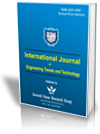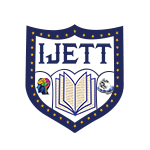Sustainable Strategies for Preserving the Intangible Cultural Heritage of Pinisi Shipbuilding in South Sulawesi
Sustainable Strategies for Preserving the Intangible Cultural Heritage of Pinisi Shipbuilding in South Sulawesi |
||
 |
 |
|
| © 2025 by IJETT Journal | ||
| Volume-73 Issue-10 |
||
| Year of Publication : 2025 | ||
| Author : Miftahuljannah, Muhammad Yamin Jinca, Windra Priatna Humang | ||
| DOI : 10.14445/22315381/IJETT-V73I10P103 | ||
How to Cite?
Miftahuljannah, Muhammad Yamin Jinca, Windra Priatna Humang,"Sustainable Strategies for Preserving the Intangible Cultural Heritage of Pinisi Shipbuilding in South Sulawesi", International Journal of Engineering Trends and Technology, vol. 73, no. 10, pp.22-31, 2025. Crossref, https://doi.org/10.14445/22315381/IJETT-V73I10P103
Abstract
The Pinisi, a traditional wooden sailing vessel from the Bugis-Makassar maritime tradition in South Sulawesi, Indonesia, was inscribed by UNESCO in 2017 as an Intangible Cultural Heritage (ICH). Beyond its symbolic and cultural value, the Pinisi plays a crucial role in sustaining local livelihoods and strengthening maritime identity. However, traditional shipyards in Bulukumba face pressing challenges such as limited availability of quality timber, declining interest among younger generations in becoming panrita lopi (master boatbuilders), and insufficient investment. Previous studies have largely focused on technical, cultural, or economic aspects in isolation, leaving a gap in comprehensive preservation strategies. This study integrates a literature review, field observation, and in-depth interviews to explore the conditions of traditional shipbuilding in Bulukumba. Data were analyzed using a qualitative descriptive approach supported by SWOT analysis, enabling the identification of internal strengths and weaknesses and external opportunities and threats that influence the sustainability of the Pinisi industry. Findings indicate that while UNESCO recognition has reinforced cultural identity and opened economic opportunities—particularly in tourism and creative industries—significant obstacles remain. The scarcity of sustainable raw materials, the threat of knowledge extinction due to generational gaps, and weak policy implementation undermine long-term resilience. The SWOT analysis highlights opportunities for integrating cultural heritage into sustainable maritime development, including education-based regeneration programs, eco-tourism initiatives, and multi-stakeholder collaboration. This study provides a comprehensive framework that bridges cultural preservation with socio-economic development. It contributes academically by filling the gap left by fragmented earlier research and practically by offering strategic recommendations for policymakers, communities, and stakeholders. Ensuring the sustainability of Pinisi shipbuilding requires integrated policies, sustainable resource management, and youth engagement, positioning the Pinisi not only as cultural heritage but also as a driver of resilient maritime economies.
Keywords
Pinisi, traditional shipbuilding, intangible cultural heritage, SWOT analysis, maritime sustainability.
References
[1] Ministry of Marine Affairs and Fisheries, Annual Report of the Ministry of Marine Affairs and Fisheries, Jakarta, 2020. [Online]. Available: https://drive.google.com/file/d/1NRqWT4DCA-kdPLTRxIxoe0DRW5WNWt5i/view [2] Antonius Hendrawan Tio Praditya, Sjarief Widjaja, and Triwilasndio Wuruk Pribadi, “Revitalization of Environmentally Friendly Pinisi PELRA Fleet as a Feeder for Perintis Routes in 3TP Areas,” International Journal of Marine Engineering Innovation and Research, vol. 10, no. 2, pp. 310-319, 2025.
[Google Scholar] [Publisher link]
[3] Lisnayanti Lisnayanti, “Pinisi Maritime Traditions in the Bonto Bahari Community of Bulukumba,” Al-Hikmah: Journal of Social Sciences and Humanities, vol. 26, no. 1, pp. 45-56, 2024.
[Google Scholar]
[4] Eymal B. Demmalino, Tamzil Ibrahim, and Yopie Lumoindong, “Panrita Lopi: Cultural Value and Religiosity Behind Professionalism of Making Pinisi Boats in Bulukumba,” ETNOSIA: Indonesian Ethnographic Journal, vol. 4, no. 1, pp. 1-19, 2019.
[CrossRef] [Google Scholar] [Publisher link]
[5] Pinisi, art of Boatbuilding in South Sulawesi (No. 01197), Representative List of the Intangible Cultural Heritage of Humanity, UNESCO Intangible Cultural Heritage, 2025. [Online]. Available: https://ich.unesco.org/en/RL/pinisi-art-of-boatbuilding-in-south-sulawesi-01197
[6] Amir Amir et al., “Model of Raw Material Inventory Control for Pinisi Shipbuilding in Bulukumba Regency, Indonesia,” European Journal of Business and Management Research, vol. 8, no. 4, pp. 116-121, 2023.
[CrossRef] [Google Scholar] [Publisher link]
[7] Presidential Regulation, “Presidential Regulation (Perpres) Number 74 of 2021 Concerning the Empowerment of People's Shipping Maritime Transportation,” Central Government, Indonesia, 2021.
[Publisher link]
[8] “Law Number 66 of 2024 Concerning the Third Amendment to Law Number 17 of 2008 Concerning Shipping,” Central Government, Indonesia, 2024.
[Publisher link]
[9] Akhmad et al., “The Process of making a Pinisi Boat in Bantobahari District, Bulukumba Regency, Indonesia,” European Journal of Engineering and Technology Research, vol. 7, no. 5, pp. 70-75, 2022.
[CrossRef] [Google Scholar] [Publisher link]
[10] Syahrul Amar, Badarudin, and Andi Sulastri, “The Pinisi: A Study on the Development of Boat Technology,” Journal of Physics: Conference Series: The 5th Hamzanwadi International Conference of Technology and Education, Lombok, Indonesia, vol. 1539, no. 1, pp. 1-5, 2020.
[CrossRef] [Google Scholar] [Publisher link]
[11] Muslimin Udding et al., “The Existence of Panrita Lopi: A Study on the Difficulties of Regeneration of Pinisi Ship Craftsmen in Bonto Bahari District,” Patra Widya: Historical and Cultural Research Publishing Series, vol. 19, no. 2, pp. 143-160, 2018.
[Google Scholar] [Publisher link]
[12] Akhmad et al., “The Development Prospect of the Pinisi Vessel Industry in the Bulukumba Regency Indonesia,” International Journal of Innovation, Creativity and Change, vol. 12, no. 10, pp. 183-194, 2020.
[Google Scholar] [Publisher link]
[13] Rangkuti Freddy, SWOT Analysis Technique for Dissecting Business Cases, Reorienting the Concept of Strategic Planning to Face the 21st Century, Gramedia Main Library, 2017.
[Google Scholar] [Publisher link]
[14] The Pinisi Festival Showcases Cultural Excellence Recognized by UNESCO, ANTARA, 2025. [Online]. Available: https://www.antaranews.com/berita/5014309/festival-pinisi-hadirkan-keunggulan-budaya-yang-diakui-unesco
[15] Andi Yurni Ulfa et al., “Informal Education in the Process of Making Pinisi Boats,” Advances in Social Science, Education and Humanities Research: Proceedings of the 1st World Conference on Social and Humanities Research (W-SHARE 2021), Atlantis Press, 2022.
[CrossRef] [Google Scholar] [Publisher link]
[16] The Acting Governor of South Sulawesi Encourages Bulukumba Tourism Development to be on a Level with Labuan Bajo, South Sulawesi Provincial Government, 2023. [Online]. Available: https://sulselprov.go.id/post/pj-gubernur-sulsel-dorong-pengembangan-pariwisata-bulukumba-setara-labuan-bajo
[17] Muallif, Preserving the Heritage: Efforts to Preserve Pinisi Ships in the Modern Era, An Nur Islamic University, Lampung, 2023. [Online]. Available: https://an-nur.ac.id/blog/menjaga-warisan-upaya-pelestarian-kapal-pinisi-di-era-modern.html#:~:text=Pelestarian%20Kapal%20Pinisi%20adalah%20upaya,warisan%20budaya%20yang%20tak%20ternilai
[18] Misbahuddin, Three Hours Aboard the Pusaka Indonesia Pinisi Ship, Detik.com, 2023. [Online]. Available: https://news.detik.com/kolom/d-6375540/tiga-jam-bersama-kapal-pinisi-pusaka-indonesia
[19] Sailing with Pinisi, Students are Equipped with Maritime Education, DariLaut.id 2019. [Online]. Available: https://darilaut.id/berita/berlayar-dengan-pinisi-pelajar-dibekali-edukasi-maritim

